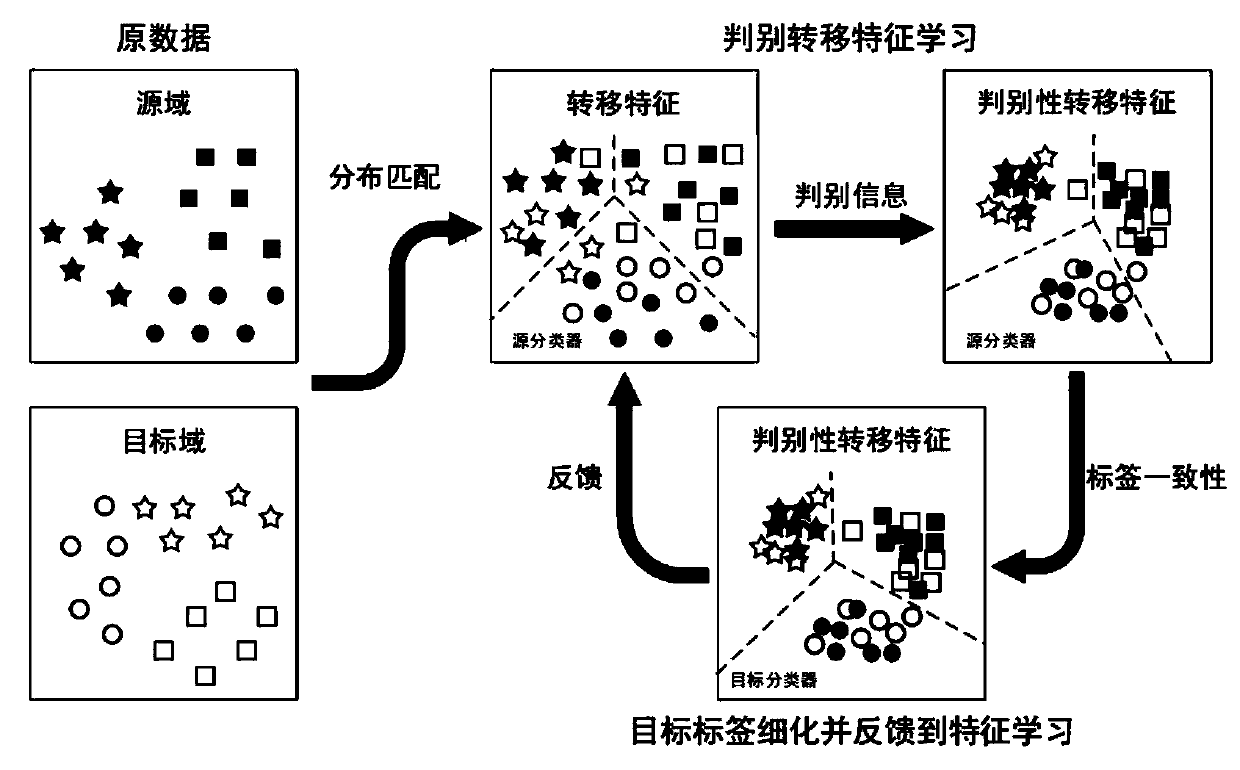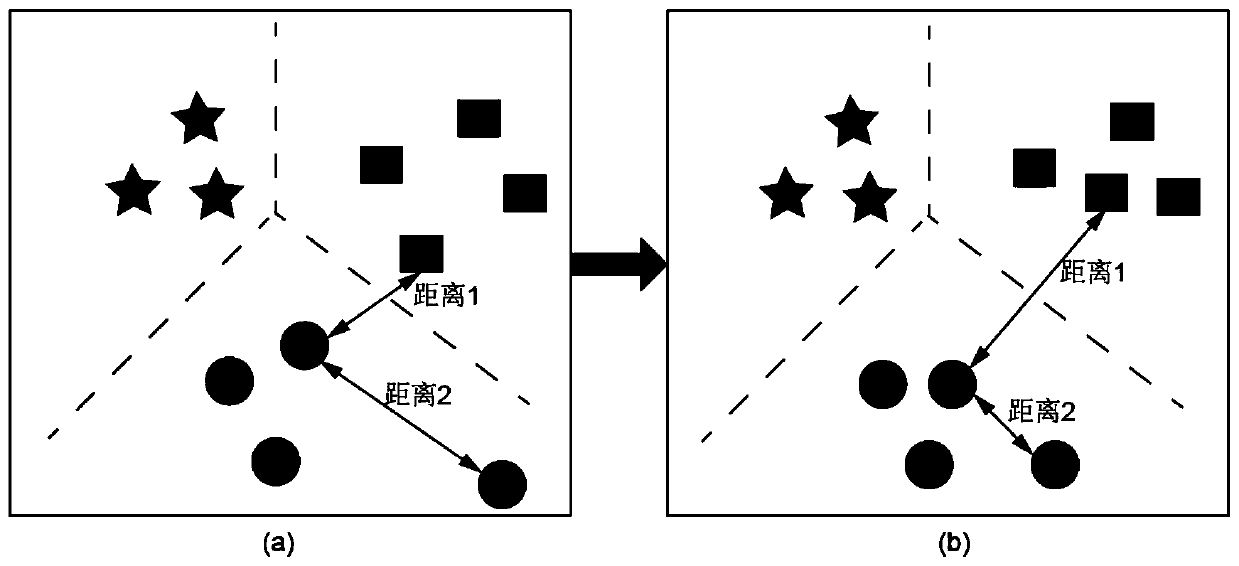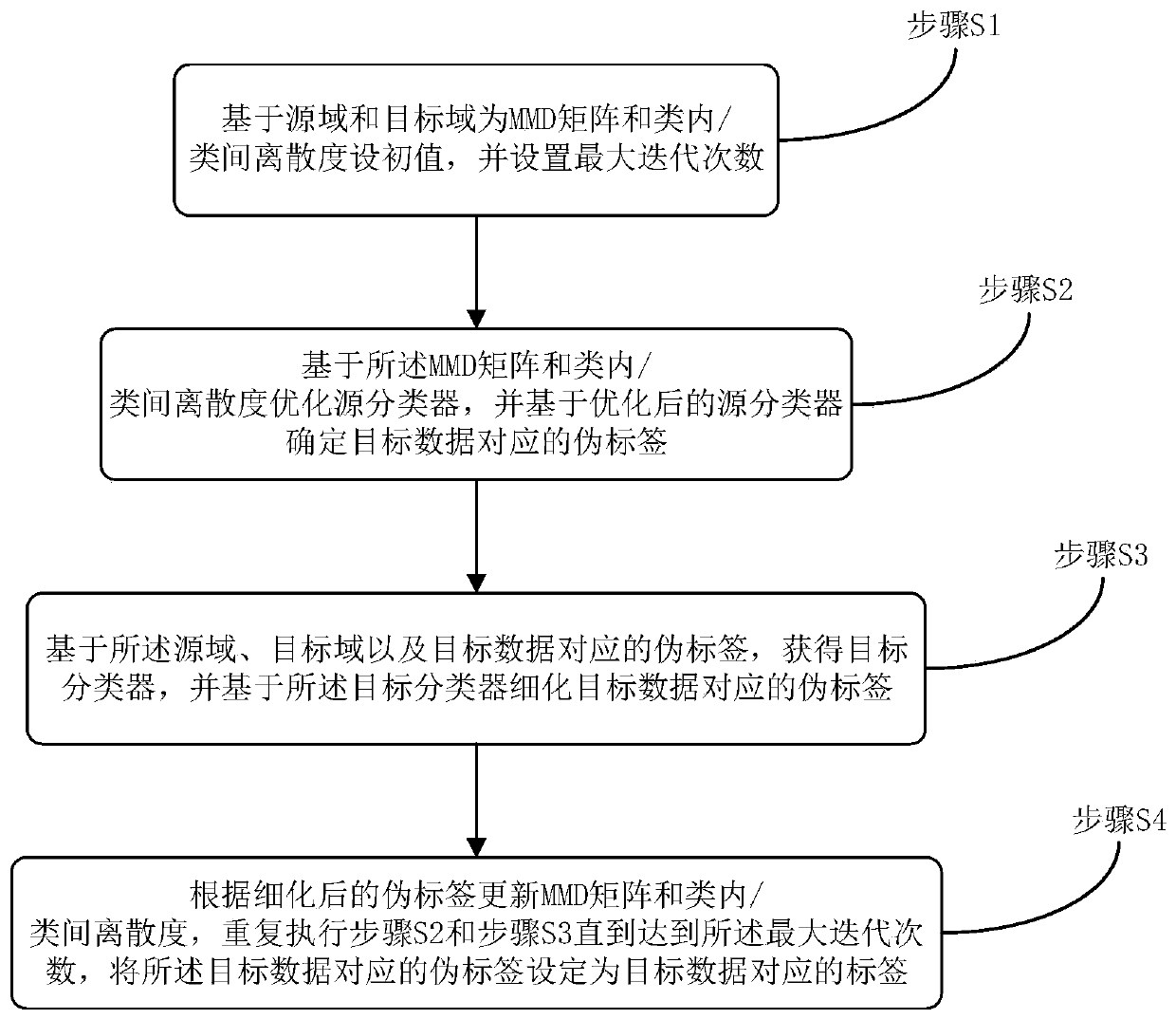Domain adaptive migration feature method and system
An adaptive, domain-based technology, applied in the field of image processing, can solve problems such as reducing the accuracy of target recognition and ignoring label consistency information
- Summary
- Abstract
- Description
- Claims
- Application Information
AI Technical Summary
Problems solved by technology
Method used
Image
Examples
Embodiment 1
[0087] In the current status of transfer learning, how to effectively reduce the distribution difference between the source domain and the target domain is the main challenge of domain adaptation. Therefore, the present invention proposes a method based on domain adaptive transfer feature learning and label consistency, which aims to pass Realize two key points to achieve the purpose of effective domain adaptation:
[0088] 1) The features learned during transfer learning are not only domain invariant but also class discriminative;
[0089] 2) Effectively utilize the pseudo-labels of the target domain to serve for domain distribution alignment.
[0090] Such as figure 1 As shown, the proposed method of the present invention integrates domain-invariant feature learning of class discriminative information and object label refinement with label consistency into a general framework. transfer in figure 1 Different shapes represent different classes.
[0091] Such as image 3 s...
Embodiment 2
[0192] In transfer learning, it is common practice to extract domain-invariant features to reduce the difference between source and target domains, so that valuable information on the source domain can be effectively transferred to the target domain. However, the features learned by minimizing the distance metric (e.g., the maximum mean difference MMD) that characterizes the distribution difference between the source and target domains have been distorted, and there is a high possibility of distortion. Feature distortion may greatly lose the intrinsic category structure information transferred from the source domain to the target domain, thereby reducing the accuracy of object recognition. Therefore, the learned features should not only be domain invariant but also class discriminative.
[0193] To achieve this goal, the present invention proposes a loss term that, for each sample in the source and target domains, penalizes the farthest data pair of its class and the closest d...
Embodiment 3
[0222] Based on the same inventive concept, this embodiment also provides a domain adaptive migration feature system, including:
[0223] The initial module is used to set the initial value for the MMD matrix and the intra-class / inter-class dispersion based on the source domain and the target domain, and set the maximum number of iterations;
[0224] Discriminant transfer feature learning module, for optimizing the source classifier based on the MMD matrix and intra-class / inter-class dispersion, and determine the corresponding pseudo-label of the target data based on the optimized source classifier;
[0225] A label consistency module, configured to obtain a target classifier based on the pseudo-labels corresponding to the source domain, the target domain, and the target data, and refine the pseudo-labels corresponding to the target data based on the target classifier;
[0226] The iterative solution module is used to update the MMD matrix and the intra-class / inter-class dispe...
PUM
 Login to View More
Login to View More Abstract
Description
Claims
Application Information
 Login to View More
Login to View More - R&D
- Intellectual Property
- Life Sciences
- Materials
- Tech Scout
- Unparalleled Data Quality
- Higher Quality Content
- 60% Fewer Hallucinations
Browse by: Latest US Patents, China's latest patents, Technical Efficacy Thesaurus, Application Domain, Technology Topic, Popular Technical Reports.
© 2025 PatSnap. All rights reserved.Legal|Privacy policy|Modern Slavery Act Transparency Statement|Sitemap|About US| Contact US: help@patsnap.com



